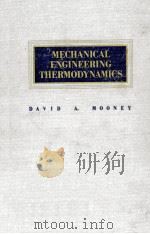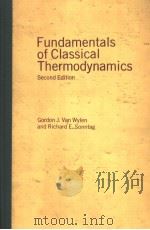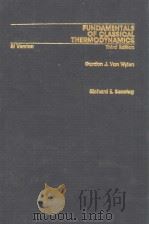《Fundamentals of engineering thermodynamics》
| 作者 | John R.Howell Richard O.Bucki 编者 |
|---|---|
| 出版 | 未查询到或未知 |
| 参考页数 | 1033 |
| 出版时间 | 没有确切时间的资料 目录预览 |
| ISBN号 | 0079093698 — 求助条款 |
| PDF编号 | 811405848(仅供预览,未存储实际文件) |
| 求助格式 | 扫描PDF(若分多册发行,每次仅能受理1册) |
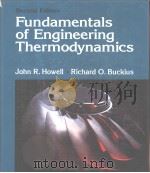
CHAPTER 1Introduction2
1.1Energy and Society5
1.1.1 Value of Energy5
1.1.2 Need to Understand Energy and Its Forms5
1.2 Energy Balance Approach—Applications in Engineering6
1.3 Work and Heat Transfer9
1.4 Macroscopic versus Microscopic Viewpoint10
1.5 Problem Solving10
1.6 Units12
1.7 Scope of Text14
PROBLEMS15
REFERENCES17
CHAPTER 2 Energy and Energy Transfer18
2.1Introduction21
2.2Concepts and Definitions21
2.2.1 System and Surroundings21
2.2.2 System Description23
2.2.3 Equilibrium States and Quasi-Equilibrium Processes25
2.3Some Common Properties26
2.3.1 Pressure P26
2.3.2 Specific Volume v28
2.3.3 Temperature T28
2.3.4 The Ideal Gas29
2.4 Energy31
2.5Energy Transfer32
2.5.1 Work33
2.5.2 Heat Transfer49
2.5.3 Power50
2.6 Energy—What Is It?51
PROBLEMS52
REFERENCES 8o82
CHAPTER 3 Properties of Common Substances82
3.1Introduction85
3.2 State Postulate—Applications to Property Relations85
3.3Simple Compressible Substances87
3.3.1 Liquid Phases87
3.3.2 Saturation and Phases88
3.3.3 Quality89
3.3.4 Superheated Vapor91
3.3.5 P-v Diagram91
3.4Other Thermodynamic Properties99
3.4.1 Internal Energy and Enthalpy99
3.4.2 Specific Heats100
3.5Development of Property Data101
3.5.1 Graphical Data Presentation101
3.5.2 Equation of State102
3.5.3 Tabular Data117
3.5.4 Computerized Property Data Retrieval124
3.6 Remarks125
PROBLEMS126
REFERENCES138
CHAPTER 4 First Law of Thermodynamics140
4.1Introduction143
4.2Conservation Principles and the First Law of Thermodynamics143
4.2.1 Conservation of Mass144
4.2.2 First Law of Thermodynamics144
4.2.3 Generalized Control Mass Forms for Conservation of Mass and the First Law155
4.2.4 Other Conservation Relations156
4.3Control Volume Formulation157
4.3.1 Conservation of Mass157
4.3.2 Conservation of Energy159
4.3.3 Generalized Control Volume Forms for Conservation of Mass and the First Law164
4.4Control Volume Analysis167
4.4.1 Inlet and Outlet Considerations167
4.4.2 Considerations within the Control Volume169
4.4.3 Steady State Analysis171
4.4.4 Unsteady State Analysis171
4.5Control Volume Applications173
4.5.1 Steady State Work Applications174
4.5.2 Magnitude of Various Terms in the First Law178
4.5.3 Steady State Flow Applications180
4.5.4 Unsteady State Work Applications184
4.5.5 Unsteady State Flow Applications186
4.6 Other Statements of the First Law190
PROBLEMS191
CHAPTER 5 Entropy and the Second Law of Thermodynamics246
5.1Introduction249
5.1.1 Physical Observations249
5.1.2 Increasing Disorder by Heat Transfer252
5.2 Entropy and the Second Law for an lsolated System253
5.3 Reversible and lrreversible Processes255
5.4Temperature and Pressure Definitions258
5.4.1 Temperature259
5.4.2 Pressure260
5.5Entropy—The Property263
5.5.1 Entropy Relations265
5.5.2 Ideal Gas Relations267
5.5.3 Incompressible Fluid or Solid Relations270
5.6 Control Mass Formulation272
5.7Classical Approach to the Second Law of Thermodynamics281
5.7.1 Cycles281
5.7.2 Reversible and Irreversible Processes283
5.7.3 Statements of the Second Law of Thermodynamics and Resultant Conclusions284
5.7.4 Thermodynamic Temperature Scale287
5.7.5 The Clausius Inequality287
5.7.6 Entropy288
5.8Control Volume Formulation and Analysis290
5.8.1 Spatial and Time Variation Idealizations293
5.8.2 Applications294
5.9Isentropic Process300
5.9.1 Isentropic Process for an Ideal Gas301
5.9.2 Isentropic Process for an Incompressible Fluid or Solid305
5.10 Special Considerations306
5.11 Component Efficiencies312
5.11.1 Turbine Efficiency312
5.11.2 Compressors and Pumps323
5.11.3 Nozzles327
5.11.4 Heat Exchangers334
5.11.5 Control Mass Efficiency335
5.12 Cyclic Processes and the Carnot Cycle336
5.13 Temperature Measurement341
5.14 Other Statements of the Second Law341
5.15 Summary343
PROBLEMS344
REFERENCES403
CHAPTER 6 Thermodynamic Cycle Analysis and Applications to Gas Cycles404
6.1Introduction to Heat Engine Cycles407
6.1.1 Cycle Analysis Methodology408
6.1.2 Mean Effective Pressure410
6.1.3 Efficiency and Practicality413
6.2Gas Cycle Analysis414
6.2.1 Air-Standard Cycles414
6.2.2 Effect of the Assumption of Temperature-Independent Specific Heats415
6.2.3 The Air-Standard Carnot Cycle416
6.3Gas Cycle Heat Engines419
6.3.1 Stirling Cycle419
6.3.2 Ericsson Cycle422
6.3.3 Brayton Cycle (External Heat Transfer)425
6.4Internal Combustion Cycles437
6.4.1 Brayton Cycle (Internal Combustion)437
6.4.2 Applications of the Brayton Cycle438
6.4.3 Air-Standard Otto Cycle443
6.4.4 Air-Standard Diesel Cycle448
6.4.5 Dual Cycle449
6.4.6 Other Gas Cycles454
6.5Refrigeration, Air Conditioning, and Heat Pump Cycles461
6.5.1 Coefficient of Performance for Air Conditioners and Chillers461
6.5.2 Coefficient of Performance for Heat Pumps462
6.5.3 Gas Cooling Cycles Driven by Work Input462
6.5.4 Cooling Cycles Driven by Heat Transfer464
6.6 Concluding Remarks466
PROBLEMS467
CHAPTER 7 Vapor Cycle Analysis496
7.1Vapor Cycle Analysis499
7.1.1 Vapor Cyele Heat Engines499
7.1.2 Vapor Cycle Cooling Devices and Heat Pumps500
7.2Rankine Cycle500
7.2.1 Inefficiencies of Real Cycles507
7.2.2 Increasing the Rankine Cycle Efficiency509
7.2.3 Applications of the Rankine Cycle526
7.3Other Vapor Heat Engine Cycles529
7.3.1 The Kalina Cycle529
7.3.2 Cogeneration and Combined-Cycle Plants531
7.4Vapor Cooling and Heat Pump Cycles535
7.4.1 Vapor Compression Systems535
7.4.2 Vapor Cooling Cycles Driven by Heat Transfer539
7.5 Concluding Remarks541
PROBLEMS542
CHAPTER 8 Analysis Using the Second Law of Thermodynamics564
8.1Introduction567
8.2 Reversible Work568
8.3 Availability573
8.4 Irreversibility578
8.5 Energy, Helmholtz Function, Gibbs Function581
8.6 General Process Comparisons582
8.7Second Law Efficiencies590
8.7.1 Second Law Efficiency of Components That Produce Work or Require Work Input590
8.7.2 Second Law Efficiency of Other Components592
8.7.3 Second Law Efficiency of Heat Engine and Refrigeration Cycles594
8.8 Summary596
PROBLEMS597
REFERENCES605
CHAPTER 9 General Property Relations and Equations of State608
9.1Introduction611
9.2Relations among Properties611
9.2.1 Fundamental Equations and Maxwell's Relations611
9.2.2 Clapeyron Equation615
9.2.3 Generation of Property Tables616
9.3Principle of Corresponding States620
9.3.1 Some Observations Based on van der Waals' Equation620
9.3.2 Expanded Use of the Principle of Corresponding States622
9.4Some Other Properties631
9.4.1 Isothermal Compressibility632
9.4.2 Coefficient of Thermal Expansion632
9.4.3 Joule-Thomson Coefficient633
9.4.4 Specific Heats637
9.4.5 Fugacity638
9.5 Summary640
PROBLEMS640
REFERENCES646
CHAPTER 10 Multicomponent Systems without Chemical Reaction648
10.1Introduction651
10.2 Multicomponent Measures651
10.3 Properties of a Multicomponent Ideal Gas653
10.4Thermodynamic Analysis of Ideal Gas Mixtures660
10.4.1 Applications to Processes with Constant Composition662
10.4.2 Entropy Changes in the Mixing of Ideal Gases663
10.5Multicomponent Analysis of Ideal Gas-Vapor Mixtures668
10.5.1 Measures and Properties669
10.5.2 Psychrometrics673
10.5.3 Thermodynamic Analysis675
10.6 Psychrometric Chart680
10.7Applications681
10.7.1 Heat Transfer at Constant w681
10.7.2 Humidification682
10.7.3 Dehumidification683
10.7.4 Mixing of Air-Water Vapor Streams684
10.8Nonideal Mixtures686
10.8.1 Mixtures of Nonideal Gases686
10.8.2 Other Mixture Rules687
10.9General Mixture Relations688
10.9.1 Partial Molal Properties689
10.9.2 Property Changes during Mixing692
10.10 Summary692
PROBLEMS693
REFERENCES712
CHAPTER 11Chemical Reactions and Combustion714
11.1 Introduction717
11.2Chemical Reactions in Combustion Systems717
11.2.1 The General Case717
11.2.2 Combustion with Stoichiometric or Excess Air718
11.2.3 Air-Fuel and Equivalence Ratios722
11.3Establishing a Common Basis for Combustion Processes722
11.3.1 Zero-Enthalpy Basis722
11.3.2 Enthalpy of Formation722
11.3.3 Zero-Entropy Basis728
11.4Combustion Processes729
11.4.1 Combustion at Constant Pressure729
11.4.2 Combustion at Constant Volume731
11.4.3 Adiabatic Flame Temperature732
11.4.4 Explosion Temperature (Constant-Volume Combustion)739
11.5Applications to Combustion Systems741
11.5.1 Accounting for Excess Air741
11.5.2 Accounting for Air or Fuel Preheating743
11.5.3 Applications744
11.6Applying the Second Law to Combustion Processes746
11.6.1 Determining the Possibility of Reaction:Adiabatic Combustion746
11.6.2 Determining the Possibility of Reaction:General Combustion Problems749
11.7 Applications to Real Devices: Efficiency of Combustion Equipment752
PROBLEMS762
REFERENCES771
CHAPTER 12 Phase and Chemical Equilibrium772
12.1Introduction775
12.1.1 Chemical Equilibrium775
12.1.2 The Gibbs-Duhem Relation776
12.2Equilibrium in Nonreacting Systems777
12.2.1 Isolated Systems778
12.2.2 Single-Component Phase Equilibrium778
12.2.3 Ideal Solutions780
12.2.4 Phase Rule783
12.3Equilibrium in Systems with Chemical Reaction785
12.3.1 Finding the Equilibrium Constant786
12.3.2 Values of the Equilibrium Constant790
12.3.3 Temperature Dependence of K794
12.3.4 Pressure Dependence of Equilibrium Concentrations796
12.3.5 Phase Rule797
12.4General Equilibrium798
12.4.1 Isolated System in Chemical Equilibrium799
12.4.2 Control Mass at Constant Volume800
12.4.3 Control Mass at Constant Temperature and Pressure803
12.4.4 General Criterion for Chemical Equilibruim804
12.5 Concluding Remarks805
PROBLEMS805
CHAPTER 13Introduction to Microscopic Thermodynamics812
13.1 Introduction815
13.2Defining a Microscopic System815
13.2.1 General Properties816
13.2.2 Allowable Microstates818
13.3Influence of Ouantum Effects824
13.3.1 An Example of Quantization825
13.3.2 Uncertainty Principle826
13.3.3 Bose-Einstein Statistics827
13.3.4 Fermi-Dirac Statistics828
13.3.5 Maxwell-Boltzmann Statistics829
13.4 Application of Microsystem Information:Entropy and Other Properties830
13.5 First Law837
13.6 Concluding Remarks837
PROBLEMS838
APPENDIX A A Short History of the Development of Thermodynamics845
APPENDIX B Conversion Factors863
APPENDIX C Thermodynamic Properties in Dimensionless Form or for Both SI and USCS Units867
APPENDIX D Tables and Diagrams of Thermodynamic Data for Various Substances —SI Units909
APPENDIX E Tables and Diagrams of Thermodynamic Data for Various Substances —USCS Units947
APPENDIX F Reynolds' Transport Theorem989
APPENDIX G Computerized Tables of Thermodynamic Properties995
APPENDIX H Fundamentals of Mathematics for Thermodynamics999
APPENDIX I Answers to Selected Homework Problems1017
Index1025
《Fundamentals of engineering thermodynamics》由于是年代较久的资料都绝版了,几乎不可能购买到实物。如果大家为了学习确实需要,可向博主求助其电子版PDF文件。对合法合规的求助,我会当即受理并将下载地址发送给你。
高度相关资料
-
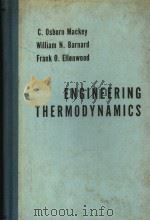
- ENGINEERING THERMODYNAMICS
- NEW YORK JOHN WILEY AND SONS
-
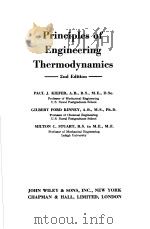
- PRINCIPLES OF ENGINEERING THERMODYNAMICS
- JOHN WILEY AND SONS INC
-
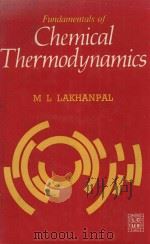
- FUNDAMENTALS OF CHEMICAL THERMODYNAMICS
- 1983 TATA MCGRAW-HILL PUBLISHING COMPANY LIMITED
-
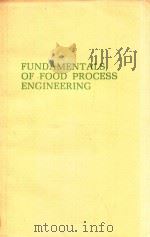
- FUNDAMENTALS OF FOOD PROCESS ENGINEERING
- 1980 AVI PUBLISHING COMPANY
-
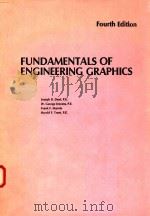
- FUNDAMENTALS OF ENGINEERING GRAPHICS
- 1987 MACMILLAN PUBLISHING COMPANY
-
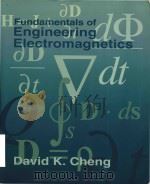
- Fundamentals of engineering electromagnetics
- 1993 Addison-Wesley Pub. Co.
-
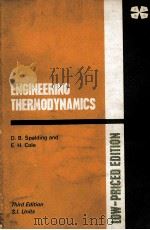
- ENGINEERING THERMODYNAMICS
- 1976 THE ENGLISH LANGUAGE BOOK SOCIETY AND EDWARD ARNOLD (PUBLISHERS) LTD
-

- ENGINEERING THERMODYNAMICS
- 1970 MCGRAW-HILL BOOK COMPANY
-
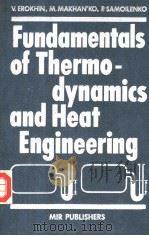
- Fundamentals of Thermodynamics and Heat Engineering
- 1986 MIR PUBLISHERS MOSCOW
-
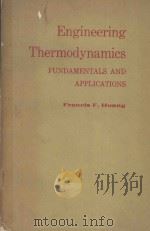
- ENGINEERING THERMODYNAMICS FUNDAMENTALS AND APPLICATIONS
- 1976 COPYRIGHT
-
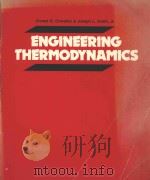
- ENGINEERING THERMODYNAMICS
- 1981 PITAMN
-
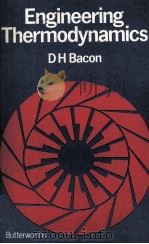
- ENGINEERING THERMODYNAMICS
- 1972 BUTTERWORTH & CO (PUBLISHERS) LTD
提示:百度云已更名为百度网盘(百度盘),天翼云盘、微盘下载地址……暂未提供。➥ PDF文字可复制化或转WORD
